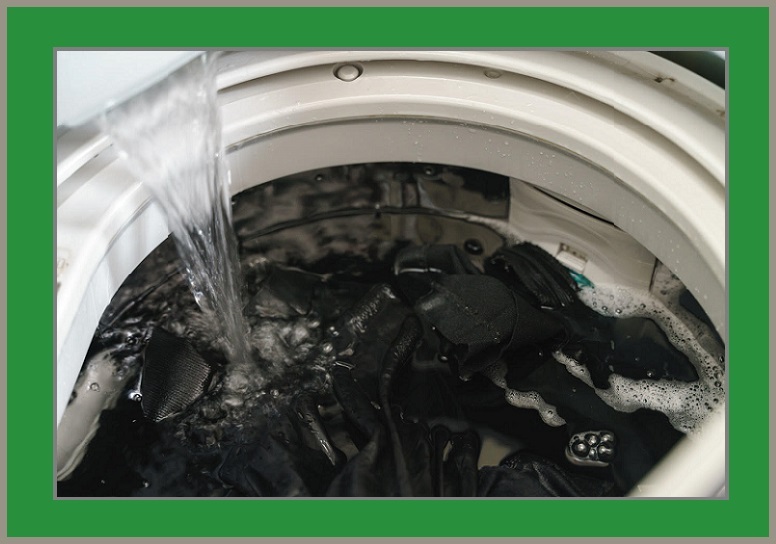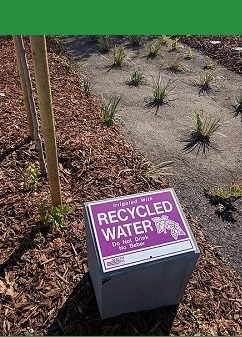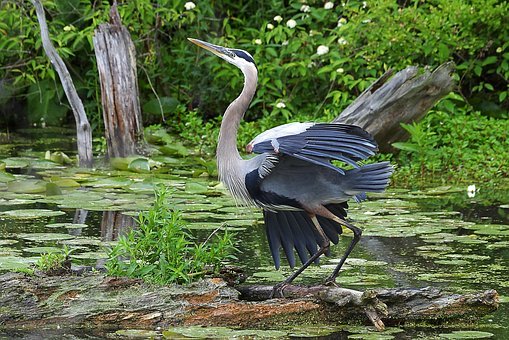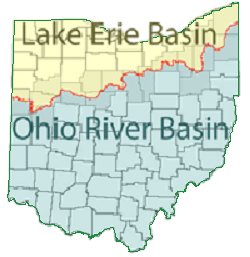
by ohioia_e612r2 | Feb 9, 2023
Join Us February 22, 2023 at the
Ohio Statehouse for Advocacy Day!
Join the industry partners of OhioPLANT in the upcoming Green Industry Advocacy Day scheduled for Tuesday, February 22, 2023 at the Ohio Statehouse in Columbus. Show your organization is part of a multi-billion dollar industry in Ohio and the importance of having a presence with Ohio’s new 135th General Assembly.
OhioPLANT is a coalition of pesticide, landscape, agriculture, nursery, and turf professionals who collaboratively advocate on behalf of those professions represented. This unified voice has made OhioPLANT the go-to resource for our state agencies and elected officials when discussing matters impacting these industries.
Tentative schedule of the day:
| 8:30 – 9:30 AM |
Legislative Breakfast Reception |
| 9:30 – 10:00 AM |
OhioPLANT Update – Tony Seegers. Esq. |
| 10:00 – 10:30 AM |
Guest Speaker TBD |
| 10:30 – 11:00 AM |
Guest Speaker TBD |
| 11:00 AM and on |
Appointments with legislators
Boxed lunch at your convenience |
Ohio Green Industry Advocacy Day is hosted by industry partners of OhioPLANT.
Don’t miss this unique opportunity to network with green industry colleagues, meet with your state legislators, and make your voice heard on issues critical to irrigation professionals.
 This year, our participation in this grassroots effort is more important than ever before.
This year, our participation in this grassroots effort is more important than ever before.
House and Senate term limits mean there will be many new faces in the state legislature, as well as in committees and chairs. Let’s make ourselves known to them!
Free to Ohio IA Members
Ohio Green Industry Advocacy Day is FREE to Ohio IA members.
As one of the events sponsors, we’re counting on you. Legislative and regulatory advocacy is one of the key benefits of Ohio IA membership which is strengthened by your active participation.
Advocacy Day provides a unique opportunity to build relationships with both green industry business partners, and members of the Ohio legislature and their staff. After all, who can tell our story better than you?

REGISTRATION
Free to Ohio IA members


What to Expect
The morning session will feature key legislative speakers, after which attendees will be briefed on discussion issues for the legislative meetings scheduled in the afternoon.
The afternoon meetings with elected officials provide an opportunity to discuss key irrigation issues (like water quality, water quantity, and environmental reforms) and state policymakers. Our legislators must hear from us in order to make informed decisions about issues critical to our industry.
Sources:
Featured Image: Pixabay
Ohio Nursery and Landscape Association

by Tom Barrett | Oct 18, 2021
Join Us November 16 at the
Ohio Statehouse for Advocacy Day!
Ohio Green Industry Advocacy Day is hosted by the Ohio Nursery and Landscape Association (ONLA) and the Ohio Irrigation Association.
Don’t miss this unique opportunity to network with green industry colleagues, meet with your state legislators, and make your voice heard on issues critical to irrigation professionals.
 This year, our participation in this grassroots effort is more important than ever before. The COVID-19 pandemic has stretched the state’s resources to the point where some agencies will have to resort to raising their fees. Since 2021 is a budget year, we can influence these discussions.
This year, our participation in this grassroots effort is more important than ever before. The COVID-19 pandemic has stretched the state’s resources to the point where some agencies will have to resort to raising their fees. Since 2021 is a budget year, we can influence these discussions.
House and Senate term limits mean there will be many new faces in the state legislature, as well as in committees and chairs. Let’s make ourselves known to them!
Free to Ohio IA Members
Ohio Green Industry Advocacy Day is FREE to Ohio IA members who register by October 25 ($89 for non-members).
As one of the events sponsors, we’re counting on you. Legislative and regulatory advocacy is one of the key benefits of Ohio IA membership which is strengthened by your active participation.
Advocacy Day provides a unique opportunity to build relationships with both green industry business partners, and members of the Ohio legislature and their staff. After all, who can tell our story better than you?

REGISTRATION
Free to Ohio IA members; $89 for non-members
(includes lunch)


What to Expect
The morning session will feature key legislative speakers, after which attendees will be briefed on discussion issues for the legislative meetings scheduled in the afternoon.
The afternoon meetings with elected officials provide an opportunity to discuss key irrigation issues (like water quality, water quantity, and environmental reforms) and state policymakers. Our legislators must hear from us in order to make informed decisions about issues critical to our industry.
Here’s a tentative schedule for the day:

Sources:
Featured Image: Pixabay
Ohio Nursery and Landscape Association

by Tom Barrett | May 13, 2021
“H20: The Molecule that Made Us” Documents the Human Relationship to Water
An amazing three-part PBS series which first aired in April of 2020 is now available for streaming. “H2O: The Molecule that Made Us” chronicles the human story through our relationship to water.
The three segments dramatically reveal how humankind’s affiliation with this simple molecule underpins every aspect of our existence. Here’s a clip of the series overview:
Note: Full episodes of this series are only available to stream through PBS Passport. (See box, below right.)
Episode 1: Pulse
The first episode explores the ways in which water has become the essential force behind all life.
What Is a PBS Passport?
PBS Passport is a member benefit for PBS donors, providing extended access to an on-demand library of public television programming.
Members who contribute annual gifts of $60 or more are eligible for the Passport benefit.
To learn more, visit the PBS Passport website.
H20 has been at the heart of the human story since the very beginning, and this first segment illustrates why we as a species can no longer take water for granted.
Episode 2: Civilizations
The second episode reveals how our success as a species is intimately connected to our control of water.
However, with the establishment and growth of our various civilizations we have created a dangerous dependence on this precious resource.
Episode 3: Crisis
The final segment of this landmark series explores how Earth’s changing water cycle is reshaping everything. Water is being mined faster than it can be replaced, as the global agricultural industry converts the planet’s precious reserves into profit.
This episode also examines the deep roots that connect water security with various conflicts around the world. If we want to understand why our world is changing, we need only follow the water.
Sources:
Featured Image: Pixabay
PBS

by Tom Barrett | Sep 9, 2020
Predicted Water Shortages Driving Demand for Greywater Irrigation
Water scarcity is an issue we normally associate with the western United States. But a recent U.S. Forest Service study predicts that Ohio and the rest of the Midwest also will be threatened by significant water shortages in the next few decades.
And the U.S. Government Accountability Office (GAO) expects that all but 10 states will experience shortages as early as 2024.
In such an environment, greywater irrigation systems will become increasingly popular, and perhaps even mandatory for commercial properties.
What Exactly Is Greywater?
Greywater (also spelled “gray water” or “graywater”) is gently used water from washing machines, bathroom sinks, tubs and showers.

The city of San Antonio, Texas, has the nation’s largest direct recycled water system, with a capacity to deliver about 29 million gallons per day of treated recycled water, using more than 130 miles of pipeline.
Source: San Antonio Water System
The name comes from its rather murky appearance, caused by traces of dirt, hair, grease, food and some household cleaning products.
Unlike “blackwater,” greywater has had no contact with any human waste from the toilet, sewer system, or from washing diapers. So while it may look dirty, greywater is a safe – and even beneficial – irrigation source. The same greywater that currently pollutes our lakes and rivers with its trace biomaterials becomes valuable fertilizer to plants.
(Greywater is not potable, however, and should never be consumed by humans or animals.)
Greywater vs. Recycled Water
Greywater is often confused with reclaimed (or recycled) water. And the terms are often used interchangeably. But they are not the same.
Recycled water is sewer water that has been cleaned with chemicals at a sewage treatment plant. It is then delivered to an entire community via purple-colored pipes, and is used primarily to irrigate parks, golf courses and other public areas.
Components of a Greywater System
Greywater irrigation is comprised of three primary stages: collection, storage and use. This can be as simple as a single diverting valve on a home’s washing machine, or a complex system of pumps, filters, storage tanks and pipes. The result is filtered greywater delivered directly to lawns, gardens and other landscaped areas via the property’s irrigation system.
–Article Continues Below–

The most basic greywater system uses a three-way valve to connect a clothes washer with a home’s irrigation system. Another excellent source of greywater is condensate from an air conditioning system, which can produce as much as 20 gallons of water per day. Integrating with a smart irrigation controller ensures water efficiency.
The water may be delivered via driplines or spray heads, but all pipes and fixtures must be purple and designated as greywater conveyors of non-potable water. The water may be used to irrigate ornamental plants, fruit trees and vegetable plants other than root vegetables, but it must not touch any edible portion of the plant.
Benefits of a Greywater System

Greywater
in Ohio
Greywater can be reused and recycled in Ohio with a permit from the local health department (Ohio Code 3701-29-17).
All pipes and fixtures conveying greywater must be purple or marked with a purple stripe and be labeled “Non-potable water, do not drink.”
There are four types of greywater systems permitted in Ohio:
TYPE 1 recycles less than 60 gallons per day. Used for subsurface irrigation of gardens, lawns and landscape plants during the growing season.
TYPE 2 recycles more than 60 gallons per day but less than 1,000 gallons per day. Also used for subsurface irrigation of gardens, lawns and landscape plants during the growing season
TYPE 3 recycles hand-carried gray water that is poured through a screen into a disposal sump tank before discharging into leach field trenches. Commonly used in campgrounds, Amish homes and remote vacation homes.
TYPE 4 recycles treated greywater to be reused year-round outside or inside buildings. Water is stored for no longer than 24 hours before reuse. Outdoors, used for green roofs, living walls, surface and subsurface irrigation of lawns, gardens, and landscape plants. Indoors, used to irrigate houseplants or living walls.
Source: Ohio State University
- Greywater systems save water and money. Manufacturers of greywater systems state that greywater irrigation can save as homeowners much as 40,000 gallons of water per year. The result is a dramatic decrease in water bills, especially during the summer months. According to Saniflo spokesman Chris Peterson, “Homeowners who begin recycling greywater now could be well ahead of the curve if and when their states begin requiring water conservation measures.”
- Greywater systems prolong the lives of septic tanks because the amount of water being deposited into the system is greatly reduced.
- Most ornamental plants find greywater to be more beneficial than tap water. Greywater contains residues, such as nitrogen, which many plants can use for food. Roses, bougainvilleas and honeysuckle particularly benefit from greywater irrigation. In addition, slightly soapy water will percolate more deeply into the soil, preventing runoff.
What It Means for Irrigation Contractors
The experts at Rain Bird believe that many (if not most) of new commercial building projects will soon require greywater or some other water-harvesting system be integrated into their landscape irrigation designs. (Hunter Industries currently uses greywater irrigation at all of its operational sites.)
In other words, irrigation professionals who haven’t yet designed and installed these systems will do so in the near future.
Want to Learn More?
Rain Bird’s Design Guide for Non-Potable Water Irrigation Systems can get you started on ways to incorporate greywater irrigation in your menu of services.
Sources:
Featured Image: Adobe, License Granted
Science Alert
WateReuse
Medium
Rain Bird

by Tom Barrett | May 6, 2020
Ohio Watersheds Are Crucial to
Its Sustainability
We all live in a watershed.
Residential areas, farms, forests, small towns, big cities …They’re all part of a massive watershed network. Watersheds cross municipal, county, state and even international borders.

Pixabay Image
They come in all shapes and sizes, encompassing millions of square miles or just a few acres. And like creeks that drain into rivers, small watersheds are almost always part of a larger watershed.
For instance, Ohio’s 23 major watersheds consist of 254 principal streams and rivers. But they all drain into either Lake Erie or the Ohio River. (See “Ohio’s Two Primary Watersheds,” below.)
Our landscape and all its activities interconnect with streams, lakes and rivers through their watersheds. Naturally varying lake levels, water movement to and from groundwater, and amount of stream flow influences them as well. The health of our waterways is largely determined by these dynamics between the land and the water.

Ohio’s Two Primary Watersheds
In Ohio, rivers north of the Continental Divide flow to Lake Erie and the St. Lawrence Seaway. Rivers south of the Divide flow to the Ohio River and, eventually, the Gulf of Mexico.
Learn more about the Lake Erie watershed:
Learn more about the Ohio River Watershed:
Becoming Watershed Wise
Watersheds must be protected if they are to sustain life. When human activities alter the natural function of the watershed, residents can be adversely affected by frequent flooding and routine periods of drought.
The three leading causes of polluted waterways are:
- Sediments
- Bacteria (such as E. coli), and
- Excess nutrients (such as nitrogen- and phosphate-based fertilizers).
Watershed-wise practices help create a balance and allow nature to work in our favor. When properly employed, residential landscapes can function as healthy mini-watersheds. The Green Gardens Group (G3) provides training and certification for its Watershed Approach to landscaping. This approach includes four key elements:
- Build Healthy Soil
- Capture Rainwater
- Select Native, Climate-Appropriate Plants
- Use Highly Efficient Irrigation
Smart irrigation technology (smart controllers, rain and soil-moisture sensors, and pressure regulators) is a key component of this approach and ensures optimal irrigation system performance.
Best Practices
As an irrigation and landscape professional, are you practicing watershed-wise principles, or are you contributing to the problem? Here are a few tips:
- Promote smart irrigation controllers and other technology with your customers, to ensure that runoff is reduced or even eliminated.

- Utilize matched precipitation rate (MPR) nozzles.
- Suggest that your customers create hydrozones (groups of plants with similar water needs) to conserve water.
- Offer your customers natural alternatives to nitrogen- or phosphate-based fertilizers? And suggest integrated pest management instead of pesticides.
- Make sure that roof runoff is directed onto a grassy area, not a sanitary or storm sewer system.
- Suggest porous surfaces for landscaping (such as flagstone, gravel or interlocking pavers), rather than impervious surfaces like concrete.
- Consider installing irrigation systems that draw from rainwater or gray water, whenever possible.
- Remind your customers that irrigation system management is critical! Systems must be actively and constantly managed in order to be watershed wise.

Take a Virtual Tour of
Ohio Watersheds
The Ohio Watershed Network offers a virtual tour of Ohio’s watersheds, beginning with the smallest streams in the watershed, the Headwaters.
From there, they move through the wider, slower-moving creeks and floodplains of the Middle Reaches. Then to the lakes, ponds and reservoirs, where sediments and many contaminants can collect.
The next stop is the precious Wetlands, with its large variety of plant and animal life. Finally, the last stop on the watershed tour is the Mighty River, where sediments, debris, or contaminants empty into the receiving waters.
We all affect the watershed, one way or another. Whether our individual influence is positive or negative is up to us.
Sources:
Featured Image: Pixabay
The Nature Conservancy
Green Gardens Group
WKYC
Ohio EPA

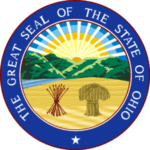 This year, our participation in this grassroots effort is more important than ever before.
This year, our participation in this grassroots effort is more important than ever before.![]()




